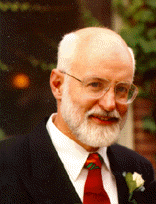| Message from the Chair |
![]()
 |
Welcome
to Computer Science, Cornell University, in Ithaca, NY,
judged to be the most enlightened town in the United
States. Computer Science itself also received its share of recognition. This year, the outstanding award to a member of our faculty went to Professor Joe Halpern, who received the Kurt Gödel Society's Gödel Prize for the outstanding article in theoretical computer science. Greg Morrisett was our Faculty of the Year, an award given by the Cornell Association for Computer Science Undergraduates. The vision statement is summarized in the next section of this annual report. |
It begins with our judgment that computer science will be of fundamental importance to science, to the US economy, to society, and especially to American universities. We see our role at Cornell in that context: To paraphrase founder Ezra Cornell, in the great American universities of the 21st century it must be possible for any student to bring to bear on any subject ideas and technology of computer science. Computer Science has become an enabling science for almost all other fields of study.
Drafts of the vision statement were discussed with the deans of Engineering and Arts & Sciences, vice presidents, and the president. From these discussions emerged a plan to fund the initial stages of implementation, starting with new positions in computational science and digital libraries and a new position in the core areas. This brings our authorized strength to 30 faculty members.
Well, that means more recruiting, a task that requires a huge effort each year. We interviewed a baker's dozen candidates culled from over hundreds of applications. We hired two new faculty and are negotiating with two more, one of the latter in the area of computational science. Lillian Lee of Harvard joins us as an assistant professor. Lillian and Claire Cardie give us a strong position in natural language processing, which is further strengthened by Cornell’s Linguistics Department with which we interact closely through the Cognitive Studies Program. Joe Halpern is the co-director of the program, along with Frank Keil of Psychology. Joe helped us attract Bart Selman from AT&T, who joins us as an associate professor with an outstanding reputation in Artificial Intelligence. This appointment, along with Joe’s, makes a statement that Cornell intends to be strong in AI.
On the teaching side, Keshav Pingali successfully changed the second programming course, CS211, to Java for which he received a College of Engineering teaching award. This fall the beginning programming course, CS100, will also begin using Java as the vehicle for teaching programming concepts and practices.
Ronitt Rubinfeld worked hard to organize a new "computer science fair" for Cornell undergraduates. Nineteen students (not necessarily CS majors) submitted web sites and poster sessions, with topics ranging from web accelerators to image transformers to genetic algorithms as tools for creating "best-fit" parametric curves to using local statistical measures for natural-language parsing. The fair was a real success, and we expect to expand it next year.
Dan Huttenlocher led the writing of a successful Research Infrastructure (RI) NSF proposal. The theme was high bandwidth, low latency access to multi-media information; the sound bite is "anything, anywhere, anytime" —meaning that we would lead an effort to create an information environment or "distributed digital library" in which Cornellians would have access to any information from any location (dorm, lab, home, beach) at anytime. The same idea was used as the core of a University-wide $6M proposal to Intel for equipment. Our department, led by Dan and Dean Krafft, organized this large proposal in one month —an extraordinary achievement.
Finally, our faculty and research associates published six books this year. Our department remains a leader in the writing of texts and research monographs, with over 55 books published since the beginning of the department in 1965.
The Department of Computer Science has a history of developing texts and monographs, beginning with Algebraic Structure Theory of Sequential Machines by founding chairman Juris Hartmanis and Richard Stearns (1966). In fact, the department has published over 60 books. Groundbreaking and influential texts have been written in many fields, including automata theory, scheduling, compiler construction, information retrieval, algorithms, programming methodology, and numerical analysis.
This year, our faculty published six new books, in the areas of networking, automata and computability, concurrent programming, and scientific computing. The books, which are featured on the front cover of this annual report, are listed below.
 |
 |
 |
 |
 |
 |
Ken Birman. Building Secure and Reliable Network Applications. Manning Publishing Company and Prentice Hall, Englewood Cliffs, NJ, 1997.
Srinivasan Keshav. An Engineering Approach to Computer Networking: ATM Networks, the Internet, and the Telephone Network. Addison-Wesley, Menlo Park, CA, 1997.
Dexter Kozen. Automata and Computability. Springer Verlag, New York, NY, 1997.
Fred B. Schneider. On Concurrent Programming. Springer Verlag, New York, NY, 1997.
Nick Trefethen and David Bau III. Numerical Linear Algebra. SIAM, Philadelphia, PA, 1997.
Charles Van Loan. Introduction
to Scientific Computing: A Matrix Approach Using MATLAB.
Prentice Hall, Englewood Cliffs, NJ, 1997.